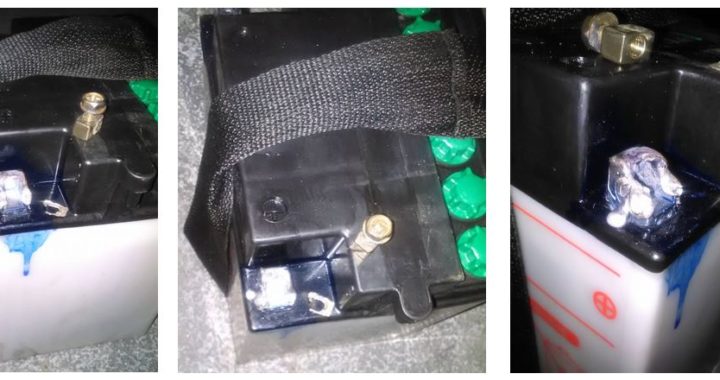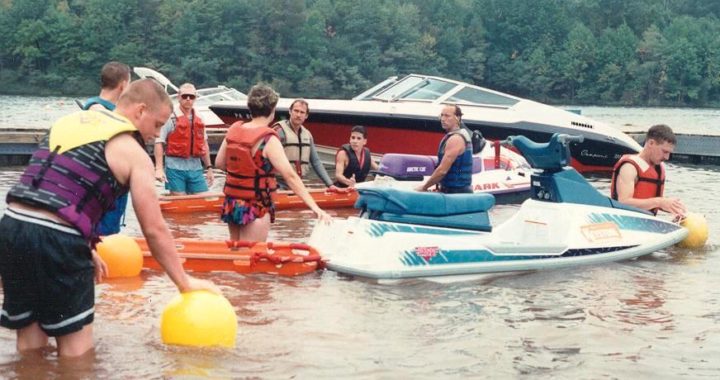Tag Archives: k38 rescue
RESCUE WATER CRAFT BATTERY ISSUES
MELTDOWN
RESCUE WATER CRAFT BATTERY ISSUES
Rescue Water Craft batteries require your constant attention. Battery inspection needs to be a daily feature in your pre and post operations inspection.
It is only avoidable if there is knowledge. So now in the aftermath of discovery it is avoidable if the knowledge is retained. Before this it is just 'learning'.
That's a dead short you are looking at in the images above. It is the result of way too much current flow. How do you know that? The posts are molten where your cables would have been connected. That is one way to explode a battery, and could become a very dangerous situation quickly.
The Rescue Water Craft fuses should have helped to prevent an explosion. It would be important in these instances to inspect your fuses ASAP.
First off you need to refer to the make, model and year of production of your Rescue Water Craft and adhere to the manufacturer’s recommendations.
Questions
Is there too much slack in the lead wires or the battery strap harness inside the RWC while operating with this battery?
Is it missing the traction pad below it rests on? Is it the right type of battery?
Did this happen inside the Rescue Water Craft or was the battery brand new and being charged for use?
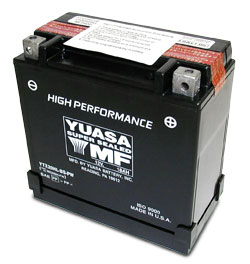
Yuasa Battery
LOOSEY GOOSEY
Loose battery connections on the lead cables create resistance and turn into ‘heat’. If the cable was not tightened enough it could create resistance for the battery when it tries to bridge the gap and arcs with a high heat. There should be no white powder on the terminals and they should not move when touched and tugged to see if the posts swivel or move.
Tight terminals are a must, as are using an inspection daily check list post and pre-ops. Be consistent, its a bad deal when problems come your way when you are out on the water. It's better to catch them while the RWC is on the trailer. Don't splash your RWC until you are 100% seaworthy.
HINT: do not use a screwdriver, use a ratchet with a properly sized socket to adjust the Pos/Neg cables!
With a loose connection the wires which are small and the load is high, what does that mean? If a battery is loose inside a Rescue Water Craft, such as the straps are connected improperly or using the wrong strap sizes or one broke free or the battery size is wrong and does not fit into the stock tray, problems are imminent.
Take a close look at the battery tray location. Does your battery shape fit fully in the tray? If not, consider heading back to a stock battery, saving money is not gonna happen in this situation.
If the battery is the right size the straps may be problematic. Friction and movement of the battery can be an issue causing the wire connections to crack or fracture and this is the kind of a situation that can cause sparks. If the battery is bouncing around those sparks are like the same heat as an arc welder. A bad situation is at hand and fully preventable.
Or you could have a short inside the battery. Even a partial short and/or poor connection on the terminals can create significant problems. In these images it looks like the pos side had a meltdown.
This kind of a situation can create other problems such as the relay or starter motor engine could have experienced damage.
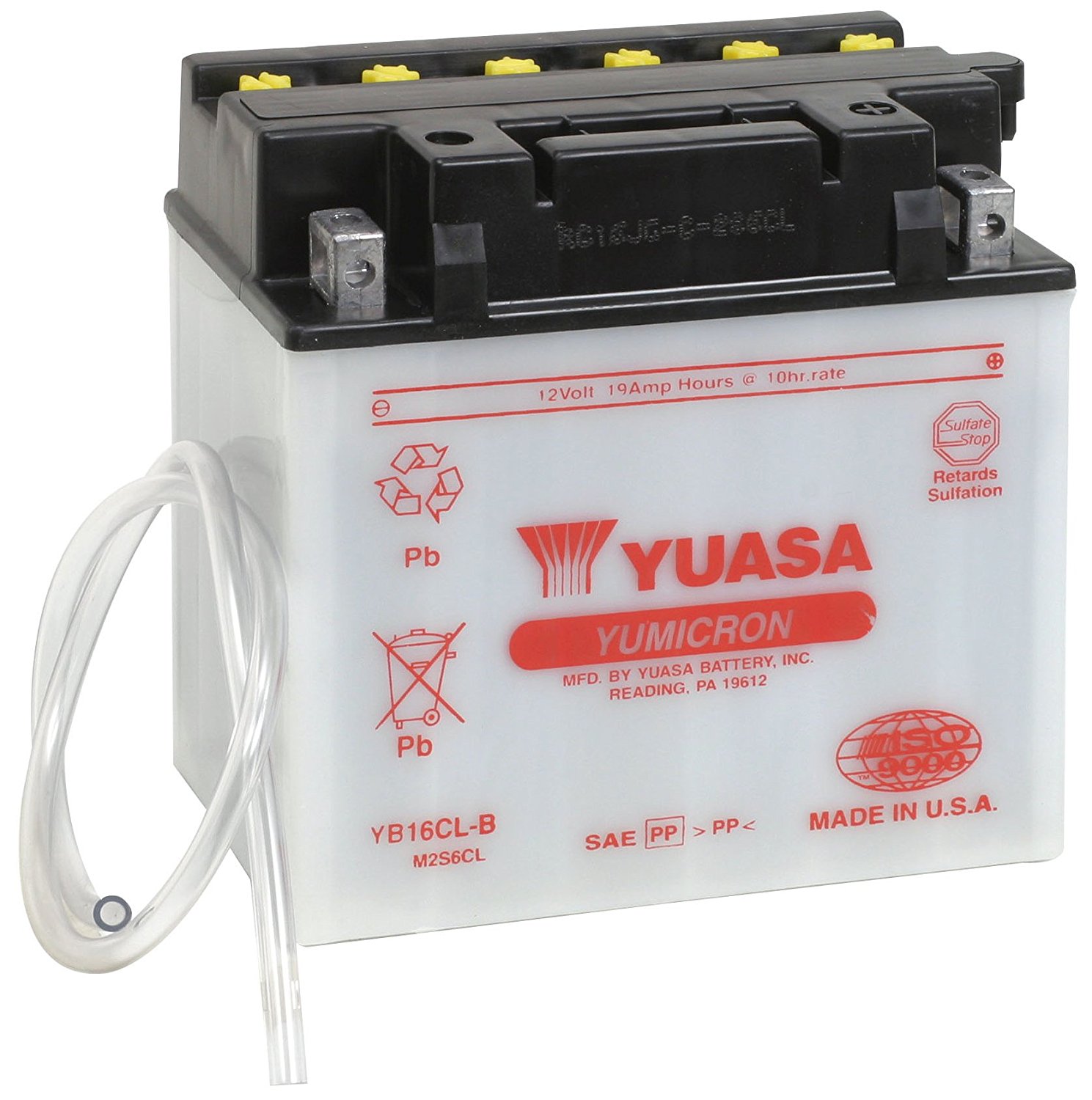
Vents and Distilled Water
JUICED
Never jump a Rescue Water Craft from another running vehicle or charger, it will feed more amps into the system and can damage or destroy the MPEM or ECU units.
Also if jumping the battery, make sure you are using the right size cables, you need the smaller cables, larger ones will not correlate with the proper amperage, and would be a wasted attempt.
I would definitely inspect the fuse and the leads pos/neg cables for rust or corrosion. Sometimes this happens when people jump their RWC batteries off a vehicle that is running, which should NEVER be done. Our Rescue Water Craft are not set up to run the amps and voltage beyond 2.5 amps in their system, this can be very destructive.
There is not much difference in voltage between a nearly full battery and a depleted one, its less than 1.0 volts. If the RWC engine is running the charging system makes an attempt to maintain a specific voltage output to the battery. This depends upon the battery ability to absorb the charge translated as Amps and the charging system delivery of the full current the battery demands.
There is a lot of demand placed on a battery and its electrical partners; from the voltage, charging, stator alternator, solenoid and starter. Never jump your battery from a vehicle, you will overcharge the system. Stay under 2 amps while charging your battery.
A solenoid is an electrical switch which causes electrical contact from the starter circuit to ground power the coil and can handle the high voltage for the starter which begins the rotation of the motor. Solenoids make a distinct click sound. If you are jumping the battery and the solenoid cranks poorly then it’s not the solenoid, it could be just a bad connection.
You can check with a volt meter on the posts to get a reading. Then press the ‘start’ button and note if the voltage is lower. It may be a weak battery.
It is important to remember to protect the electrical system and the battery by not holding down the start button longer than 5 seconds and waiting 15 seconds prior to the next start.
Frequent starts will engage a quick shut down cycle on the battery if the engine cannot run. You don’t want to burn out your starter motor. Patience goes a long way and will help you understand the temperament of your RWC electrical system.
Don’t rush, take your time to troubleshoot and be patient.
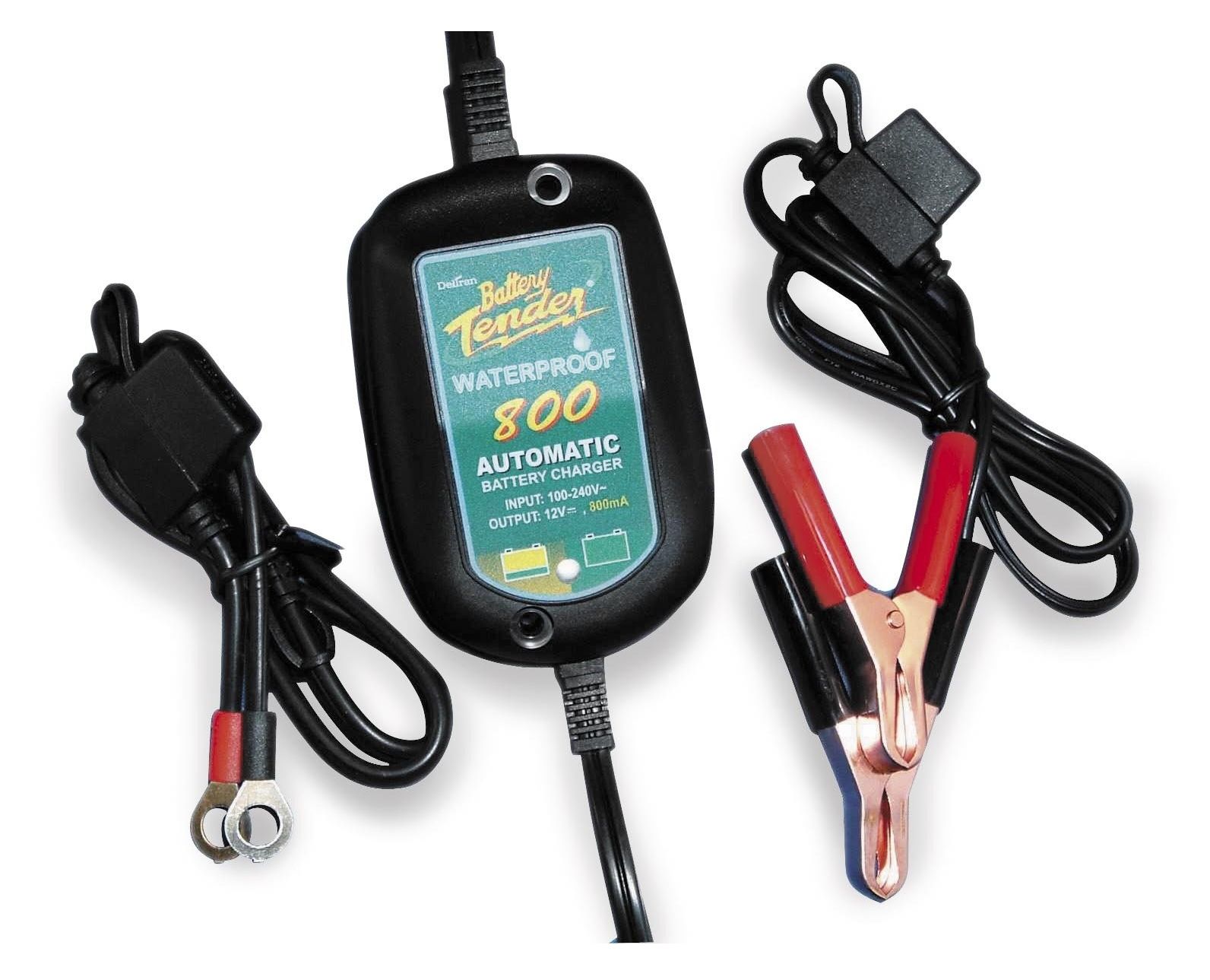
Waterproof Battery Tender
VOLTAGE
When the battery voltage drops low it’s time for a new battery. It is also possible to purchase a new battery that was not fully charged and it drops its voltage and becomes worthless pretty fast, requiring another new fully charged battery.
It is important to follow the directions for using the appropriate battery charger that can fully charge a new battery. Many times people do not follow suit properly and they waste time and money.
Waterproof battery tenders are often used for long time storage to help protect battery life. For some watercraft there are other contributing factors it could be a bad DESS key for a BRP Sea Doo as well. A simple replacement of the DESS key and coding might be the answer.
Always check a battery on a multi meter to see what the voltage level is. Make sure you are using the right battery that is recommended by the OEM manufacturer as well. Low voltage can be really bad for electronics and relays. Good batteries should be 12.3-12.5 volts but refer to your RWC brand to be specific.
Cheap batteries yield cheaper results and some of the batteries like Yuasa require a special charger to load the batteries, so that can be problematic and not getting a full charge. Use dieletric grease on the terminals in the future, you will be glad you did.
Rescue Water Craft batteries work best when the charge is maintained. Maintenance free batteries are highly recommended. Batteries get hot when working hard, so don’t overload the amperage by adding accessories to the craft that need an electrical draw.
Answer: Tight connections and Clean Cables are required, good straps and the appropriate fully charged battery. This was a brand new battery in the images above being charged.
Recap:
1. Bad Battery Sealed or Cell, gel cells or AGM (vented or not vented) Wet cell batteries need distilled water.
2. Poor Battery Connection-Partial short
3. Wrong Battery Used
4. DESS post failing (inductive arcing)
5. Fast Charged Battery
6. Inspect Fuse Box
This is not a tutorial, it’s a basic Q & A regarding battery connectivity. Take your RWC to a qualified mechanic for servicing and follow basic preventative maintenance schedules to ensure the longevity of your operations and underway safety.
Content Creator - Shawn Alladio cares most about her community and the culture surrounding the safety of event service providers and Rescue Water Craft operators, working hard and dedicated towards protecting their reputation, distributing safety information and continuing to train these amazing individuals to the highest standards of care.
LAW LOAN PROGRAM
PWC LAW LOAN PROGRAM
Yamaha and Kawasaki Public Safety Law Loan Program.
Personal Watercraft Industry Association Law Loan Program This program was set up through the PWIA for public safety agencies to receive loaner craft through participating dealerships
The following information is intended to help your agency to apply for use of Yamaha Water Vehicles in your boating related Public Safety work. The focal point of the program is the local Yamaha Dealer.
Once your documents are prepared you should contact the local Yamaha Water Vehicle dealer in your region.
They in turn will endorse the application and forward it to Yamaha Motors Corporation USA, with their approval to order the unit or units specified in your request. The exceptions to this otherwise straight forward process are the limitations of Yamaha's inventory (a seasonal consideration), and the willingness of the local Yamaha dealer whose participation is strictly voluntary.
In 2018, the PWIA Law Loan Program entered its 30th year supporting public and federal safety agencies with personal watercraft from Yamaha Motors Corporation USA, and Kawasaki Motors Corporation USA. The program began in 1989.
This program has essentially the same terms and conditions in 2012 that it had at its beginnings in 1989, when it was launched. In just the past year over 100 agencies acquired loan units through their local Kawasaki JET SKI® watercraft dealers.
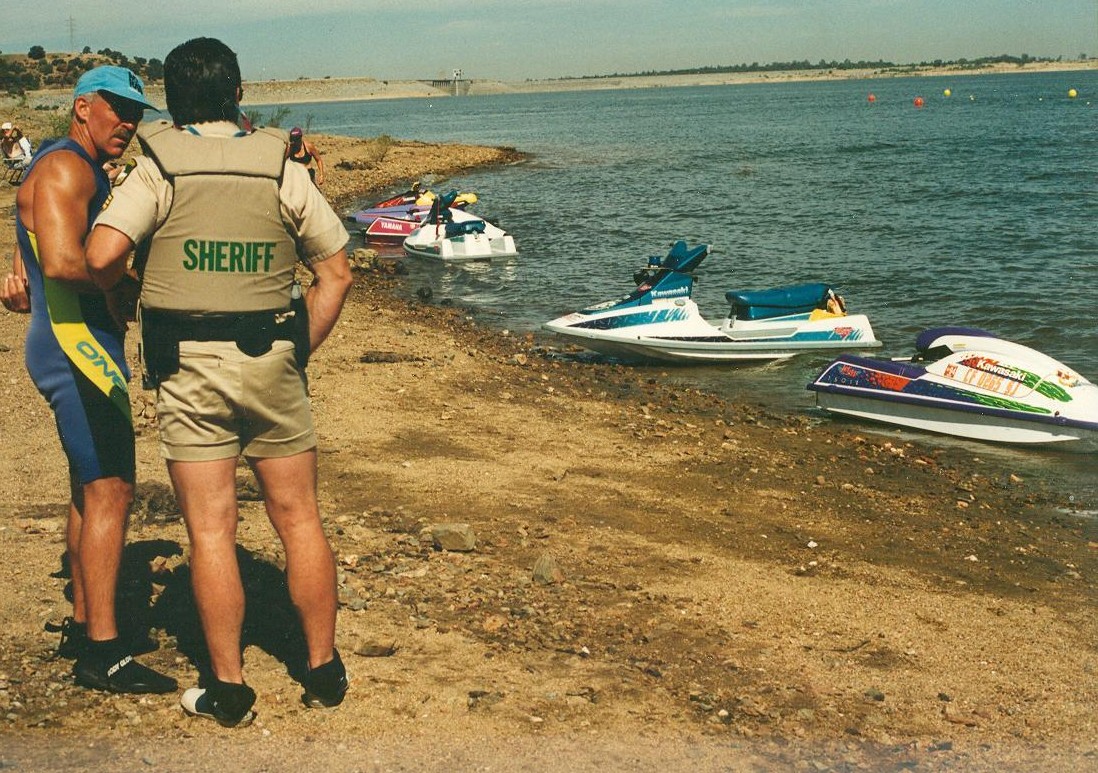
K38 Training Kawasaki TS Jet Ski
CELEBRATING 30 YEARS
In the 22 years of operation, the program has loaned approximately 4000 machines to well over 700 individual agencies. The value of these loans reaches over $20 million.
This program has been a big supporter of American communities saving taxpayers monies and supporting our local law enforcement and Search and Rescue groups.
K38 has been providing Rescue Water Craft boat operations qualification training for these agencies in concert with the PWIA Law Loan Program since 1989.
K38 has assisted hundreds of public safety agencies and thousands of personnel in competency training for these unique small boats.
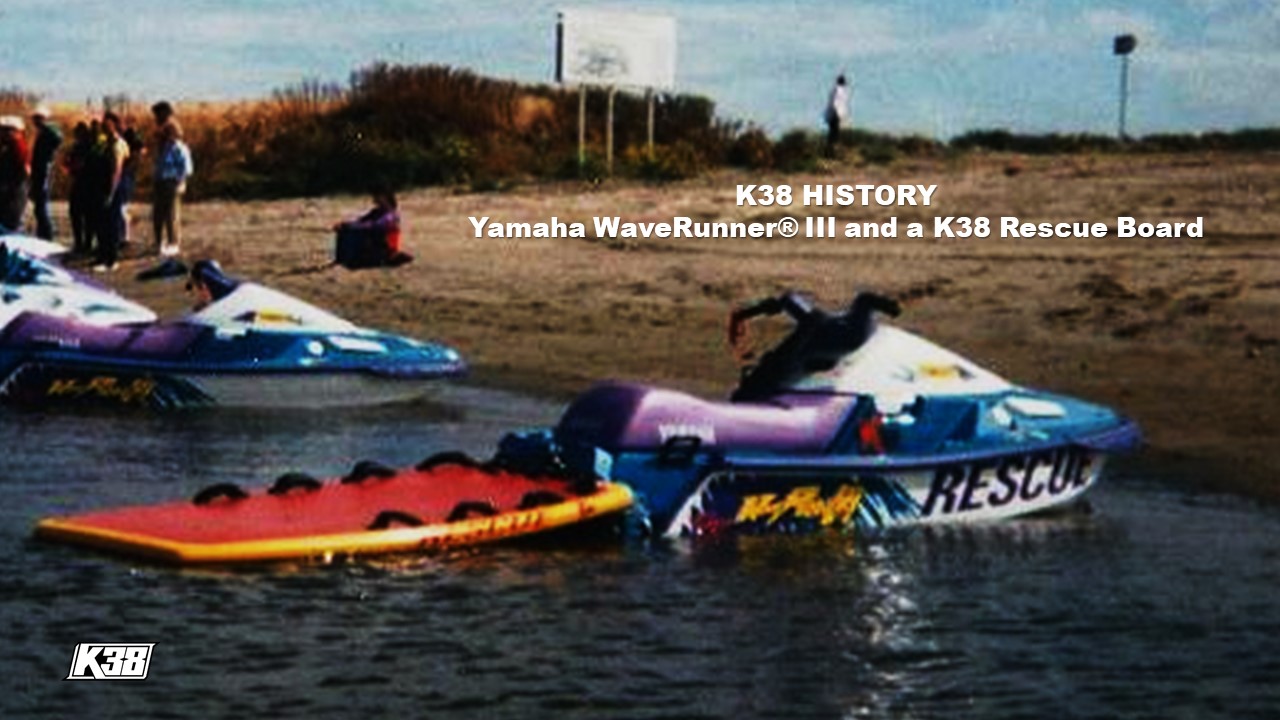
K38 Training Rescue Water Craft
KAWASAKI PUBLIC SAFETY LAW LOAN PROGRAM
POINTS TO COVER
1. Contact Information: Name, Address, Fax, Email, Agency Name and Contact Person
2. Contact Name and Number of the day (hours of operation) office of the day-to-day officer responsible for the loaned units
3. A brief statement regarding the proposed use or application of the vessel(s), (units)
4. A statement that the agency will be responsible for the routine maintenance and repair of the craft
5. A statement that the units will be returned in a condition of normal wear. Any damages the dealership notes beyond that will be the responsibility of the agency to repair.
6. A statement that the agency will assume all liability for the operation of the craft while in their possession.
As mentioned above, take this letter to your local Yamaha or Kawasaki Water Vehicle Dealer. They will add their endorsement and forward it to our office here in California or Georgia so the machine can be ordered once approved.
You can find a local Yamaha or Kawasaki dealer through their respective websites. Use your area code to conduct a search.
With the recent economic downturn many local dealerships have moved or closed, or perhaps are not participating on the law loan program. You will have to be assertive in your search if your local dealership has closed.
You do not have to stay within your city, you can roam for other surrounding areas to contact dealerships. A dealership will only have so many units available for the program.
POINTS TO COVER
1. Contact Information: Name, Address, Fax, Email, Agency Name and Contact Person
2. Contact Name and Number of the day (hours of operation) office of the day-to-day officer responsible for the loaned units
3. A brief statement regarding the proposed use or application of the vessel(s), (units)
4. A statement that the agency will be responsible for the routine maintenance and repair of the craft
5. A statement that the units will be returned in a condition of normal wear. Any damages the dealership notes beyond that will be the responsibility of the agency to repair.
6. A statement that the agency will assume all liability for the operation of the craft while in their possession.
As mentioned above, take this letter to your local Yamaha or Kawasaki Water Vehicle Dealer. They will add their endorsement and forward it to our office here in California or Georgia so the machine can be ordered once approved.
You can find a local Yamaha or Kawasaki dealer through their respective websites. Use your area code to conduct a search.
With the recent economic downturn many local dealerships have moved or closed, or perhaps are not participating on the law loan program. You will have to be assertive in your search if your local dealership has closed.
You do not have to stay within your city, you can roam for other surrounding areas to contact dealerships. A dealership will only have so many units available for the program.
K38 RECOMMENDS: THINGS TO KNOW IN ADVANCE
Good thing you are reading this! I am going to save you frustration and give you what you need:
PERSPECTIVE
1. Trailers are not included, you will need to supply your own transportation and tie downs
2. You will need to supply additional lanyards for each person on your team and replace them if worn or damaged. If you have a Bombardier, Sea Doo, you will need to have each digital lanyard coded alike off their MPEM program so your lanyards can be keyed the same. Digital keys and lanyards are not interchangeable! If you lose or break them you will not be able to start your craft.
3. Bathing suits are not to be worn, your crew must be wearing full PPE protection, and a USCG approved lifejacket, properly fitted and sized
4. Enter into effective dialogue with your loaner dealership. Do not make any make any
assumptions. Your department is held responsible for any damages to the craft upon return. Put aside an amount of money for repairs or maintenance for your program.
5. Depending upon the make, model, year and agreement, your watercraft will need a tune-up and oil change every 30-50 hours of use. (Oil filter, spark plugs, oil change)
6. Your team will need to understand how to maintain and care for craft.
7. Keep hourly logs on the boats so you can keep your maintenance hours in check.
8. Your operators need to be physically fit. This is an active ride.
9. Your operators need to know how to swim and should be evaluated wearing their full PPE kit
10. Your operators need to have their basic boating skills and current credentials in order. Our K38/NASBLA/NSBC instruction program endorses certification for a period of three years upon expiration. This is a boating standard. No exemptions! Equipment, laws, rules and regulations change, you must stay current with all your operational needs
PWC Manufacturers
1. BRP Sea Doo
2. Kawasaki Motors Corporation USA
3. Yamaha Motors Corporation USA
ABOUT PWIA
Personal Watercraft Industry Association (PWIA) represents U.S. personal watercraft manufacturers. Founded in 1987, the organization was created to promote the safe and responsible operation of personal watercraft. PWIA provides a unified voice for the segment, and represents the interests of personal watercraft manufacturers in legislative and regulatory concerns.
Content Creator - Shawn Alladio cares most about her community and the culture surrounding the safety of event service providers and Rescue Water Craft operators, working hard and dedicated towards protecting their reputation, distributing safety information and continuing to train these amazing individuals to the highest standards of care.

